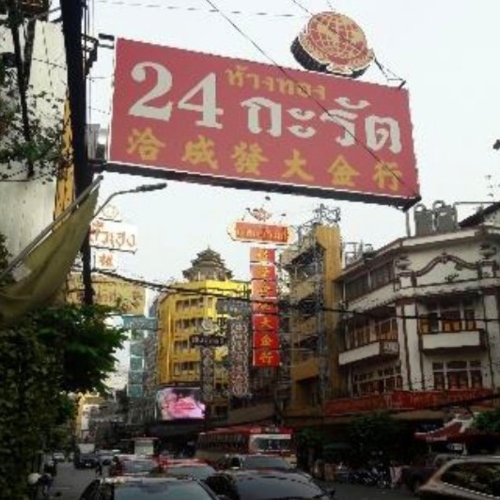งานวิจัยและบทความ

การศึกษาอัตลักษณ์ทางสถาปัตยกรรมในความสัมพันธ์กับย่านมรดกชุมชนเมือง: กรณีศึกษา: พื้นที่ถนนเยาวราช
โดย กรรณิกา สงวนสินธุกุล, วิญญู อาจรักษา
เผยแพร่เมื่อ 25 พฤษภาคม 2024
สถาปัตยกรรม, ชุมชนเมือง
แหล่งจัดเก็บทรัพยากรต้นฉบับ
วารสารวิชาการ คณะสถาปัตยกรรมศาสตร์ สจล. ปีที่ 27 ฉบับที่ 2 (2018): กรกฎาคม – ธันวาคม 2561
การคงอยู่ของสถาปัตยกรรมซึ่งมีคุณค่าทางประวัติศาสตร์ในย่านมรดกชุมชนเมืองนั้น เป็นสิ่งที่ส่งเสริมให้พื้นที่มีอัตลักษณ์อันชัดเจน ปัจจุบันนี้แนวคิดการอนุรักษ์เมืองเก่าไม่ได้หมายถึงเพียงการรักษาสถาปัตยกรรมแบบดั้งเดิมเอาไว้เพียงอย่างเดียว แต่ยังรวมถึงการพัฒนาโครงการอสังหาริมทรัพย์ใหม่ที่พัฒนาอยู่บนฐานของสถาปัตยกรรมที่มีคุณค่าทางประวัติศาสตร์เพื่อเพิ่มมูลค่าทางวัฒนธรรมและเศรษฐกิจอย่างไรก็ตาม การออกแบบงานสถาปัตยกรรมใหม่ในพื้นที่ศูนย์กลางเมืองเก่าจำต้องมีความเข้าใจอย่างลึกซึ้งถึงความสัมพันธ์ระหว่างงานสถาปัตยกรรมและเมือง ซึ่งบทความนี้ได้นำเสนอแนวทางการศึกษาอัตลักษณ์ทางสถาปัตยกรรมในย่านมรดกชุมชนเมือง โดยเลือกถนนเยาวราชเป็นกรณีศึกษา
ผู้วิจัยได้ใช้วิธีเก็บข้อมูลผ่านการทบทวนวรรณกรรมและการสำรวจภาคสนาม โดยวางกรอบแนวความคิดในการวิจัยเป็นการศึกษาความสัมพันธ์ระหว่างอัตลักษณ์ของชุมชนเมือง และอัตลักษณ์ทางสถาปัตยกรรม โดยในประเด็นแรกประกอบด้วยการศึกษาโครงสร้างสัณฐานเมืองและจินตภาพเมือง ประเด็นที่สองประกอบด้วยการศึกษาประเภททางสถาปัตยกรรม การใช้งานสถาปัตยกรรม รูปแบบสถาปัตยกรรม และองค์ประกอบเชิงสัญญะทางสถาปัตยกรรม จากการวิเคราะห์ข้อมูลพบว่าอัตลักษณ์ทางสถาปัตยกรรมของอาคารส่วนมากในพื้นที่ศึกษามีความสอดคล้องกับลักษณะสัณฐานของเมืองที่ประกอบขึ้นจากพื้นที่ช่วงถนนที่มีขนาดไม่ใหญ่นัก และโครงข่ายระหว่างถนนหลักและตรอกซอกซอยทำให้เกิดอาคารขนาดเล็กเรียนกันเป็นแถว ทำหน้าที่รองรับการค้าที่ชั้นล่างและอยู่อาศัยชั้นบน มีความแตกต่างด้วยทางรูปแบบสถาปัตยกรรมที่พัฒนาไปตามความเปลี่ยนแปลงของยุคสมัยและประเภทของธุรกิจ นอกจากนี้การใช้องค์ประกอบเชิงสัญญะในการสื่อสารความเป็นจีนยังทำให้พื้นที่มีเอกลักษณ์พิเศษ อาจกล่าวได้ว่าความสอดคล้องในรายละเอียดต่างๆ เหล่านี้ได้ปรากฏเป็นองค์ประกอบเฉพาะทางจินตภาพเมืองของถนนเยาวราชที่ผู้คนรับรู้ผลการศึกษานี้ถือเป็นแนวทางหนึ่งในการออกแบบสถาปัตยกรรมที่แสดงอัตลักษณ์สอดคล้องกับลักษณะมรดกชุมชนเมืองของย่านชุมชนจีนในกรุงเทพมหานคร